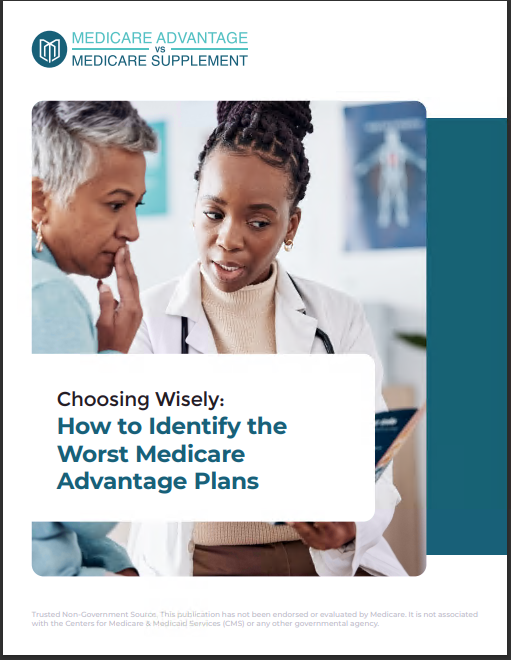Key Takeaways:
- Understanding Medicare Part D helps you choose the best drug coverage for your needs.
- Navigating costs and enrollment in Medicare Part D can save you money and ensure comprehensive coverage.
Confused About Medicare Part D? Here’s How to Nail Your Drug Coverage
Navigating the world of Medicare can be overwhelming, especially when it comes to understanding Medicare Part D. This part of Medicare offers prescription drug coverage and is essential for anyone who relies on medications. Whether you’re new to Medicare or just looking to understand your options better, this guide will break down the essentials of Medicare Part D to help you make informed decisions.
What’s Medicare Part D All About?
Medicare Part D is a prescription drug coverage plan offered by private insurance companies approved by Medicare. It’s designed to help Medicare beneficiaries manage the costs of their medications, ensuring they have access to necessary treatments without breaking the bank. Part D plans can be added to your Original Medicare (Part A and Part B) or included in a Medicare Advantage Plan (Part C) that offers prescription drug coverage.
Part D plans vary widely in terms of the drugs they cover, the costs of premiums and co-pays, and the pharmacies you can use. Understanding the basics of how Part D works can help you choose the right plan and avoid any gaps in your medication coverage.
Why Is Medicare Part D Important?
Medicare Part D is crucial for several reasons. First, it provides significant financial protection against high drug costs. Prescription medications can be incredibly expensive, and without insurance, many people would struggle to afford their prescriptions. Part D helps mitigate these costs by offering lower prices and coverage for a wide range of medications.
Second, enrolling in a Medicare Part D plan when you first become eligible can prevent future penalties. If you delay enrollment and don’t have other creditable drug coverage, you may face a late enrollment penalty that increases your premiums when you do sign up.
Lastly, having a Medicare Part D plan ensures you have access to the medications you need to maintain your health. This can be especially important for those with chronic conditions that require ongoing treatment.
Breaking Down Medicare Part D Coverage
Medicare Part D coverage is divided into several phases, each with its own cost structure. Understanding these phases can help you anticipate your drug costs throughout the year.
-
Deductible Phase: During this phase, you pay the full cost of your medications until you reach your plan’s deductible. Not all Part D plans have a deductible, and those that do can vary in amount.
-
Initial Coverage Phase: After meeting your deductible, you enter the initial coverage phase, where you share the cost of your drugs with your plan through co-pays or co-insurance. This phase continues until your total drug costs reach a certain limit.
-
Coverage Gap (Donut Hole): Once you and your plan have spent a certain amount on covered drugs, you enter the coverage gap, or “donut hole.” In this phase, you typically pay a higher percentage of your drug costs. Recent changes have closed the donut hole, reducing the financial burden during this phase, but you may still pay more than during the initial coverage phase.
-
Catastrophic Coverage: After you’ve spent a certain out-of-pocket amount, you enter the catastrophic coverage phase. Here, you pay significantly lower co-pays or co-insurance for the rest of the year.
How to Choose the Right Plan for You
Choosing the right Medicare Part D plan requires careful consideration of your medication needs and financial situation. Here are some steps to help you make an informed decision:
-
List Your Medications: Make a list of all the medications you take, including their dosages and how often you take them. This will help you compare plans to see which ones cover your prescriptions.
-
Check the Formulary: Each Part D plan has a formulary, or list of covered drugs. Make sure the plans you’re considering cover your medications. Pay attention to any restrictions, such as prior authorization or step therapy.
-
Compare Costs: Look at the total costs of each plan, including premiums, deductibles, co-pays, and co-insurance. Consider how much you’re likely to spend on medications throughout the year to find the most cost-effective plan.
-
Pharmacy Network: Check if your preferred pharmacy is in the plan’s network. Some plans offer lower costs at certain pharmacies, so it’s important to choose a plan that works with your pharmacy of choice.
-
Plan Ratings: Medicare assigns star ratings to Part D plans based on quality and performance. Higher-rated plans may offer better service and fewer issues, so consider these ratings when making your decision.
Understanding Medicare Part D Costs
The costs associated with Medicare Part D can be complex, but understanding them is key to managing your budget. Here’s a breakdown of the different costs you might encounter:
-
Monthly Premiums: This is the amount you pay each month for your Part D plan. Premiums vary by plan and can range from a few dollars to over $100 per month.
-
Deductibles: Some Part D plans have a yearly deductible that you must pay before your plan begins to cover your medications. Deductibles can vary widely.
-
Co-pays and Co-insurance: During the initial coverage phase, you’ll share the cost of your medications with your plan through co-pays (a fixed amount) or co-insurance (a percentage of the drug cost).
-
Coverage Gap Costs: If you reach the coverage gap, you’ll pay a higher percentage of your medication costs. While the gap has been reduced, it’s still important to be aware of these costs.
-
Catastrophic Coverage Costs: Once you reach catastrophic coverage, your out-of-pocket costs drop significantly. You’ll pay a small co-pay or co-insurance for covered drugs for the rest of the year.
Common Mistakes to Avoid with Part D
Navigating Medicare Part D can be tricky, and it’s easy to make mistakes that could cost you money or leave you without coverage. Here are some common pitfalls to avoid:
-
Not Enrolling on Time: Failing to enroll in a Part D plan when you’re first eligible can result in a late enrollment penalty that increases your premiums.
-
Not Reviewing Your Plan Annually: Medicare Part D plans can change from year to year. Review your plan during the annual enrollment period to ensure it still meets your needs and covers your medications.
-
Ignoring the Formulary: Not checking the plan’s formulary to ensure your medications are covered can lead to unexpected costs.
-
Overlooking Pharmacy Networks: Using an out-of-network pharmacy can result in higher costs or no coverage for your medications.
-
Assuming All Plans Are the Same: Part D plans vary widely. Don’t assume that a plan that works for someone else will work for you. Compare plans based on your specific needs.
Tips for Enrolling in Medicare Part D
Enrolling in Medicare Part D is a straightforward process, but it’s important to do it right to avoid penalties and ensure you have the coverage you need. Here are some tips to help you enroll:
-
Know Your Enrollment Periods: You can enroll in a Part D plan during your Initial Enrollment Period (IEP) when you first become eligible for Medicare, during the Annual Enrollment Period (AEP) from October 15 to December 7, or during a Special Enrollment Period (SEP) if you qualify.
-
Gather Necessary Information: Have your Medicare card, a list of your medications, and information about any other drug coverage you have when you’re ready to enroll.
-
Use the Medicare Plan Finder: The Medicare Plan Finder tool on the Medicare website can help you compare Part D plans based on your medications and pharmacy preferences.
-
Consider Assistance Programs: If you have limited income and resources, you may qualify for Extra Help, a program that helps pay Part D costs.
-
Seek Help if Needed: If you’re unsure about the enrollment process or need help choosing a plan, consider contacting a licensed insurance agent or a Medicare counselor.
Staying on Top of Your Part D Plan
Once you’ve enrolled in a Medicare Part D plan, it’s important to stay informed and proactive to ensure you get the most out of your coverage. Here are some tips for managing your Part D plan effectively:
-
Review Your Plan Annually: Use the Annual Enrollment Period to review your plan and make any necessary changes. Plans can change their formularies, costs, and pharmacy networks each year.
-
Keep Track of Your Medications: Maintain an updated list of your medications and their costs. This can help you identify any changes in coverage or costs.
-
Utilize Preferred Pharmacies: Use pharmacies in your plan’s preferred network to save money on your medications.
-
Monitor Your Costs: Keep an eye on your drug costs throughout the year, especially if you’re approaching the coverage gap.
-
Reach Out for Help: If you have questions or issues with your Part D plan, contact your plan’s customer service or seek assistance from a Medicare counselor.
Navigating Your Medicare Part D Plan
Medicare Part D is a vital component of your healthcare coverage, providing essential assistance with prescription drug costs. By understanding how it works and carefully choosing and managing your plan, you can ensure you have the coverage you need to maintain your health without facing overwhelming expenses.
Contact Information:
Email: [email protected]
Phone: 6195558901










